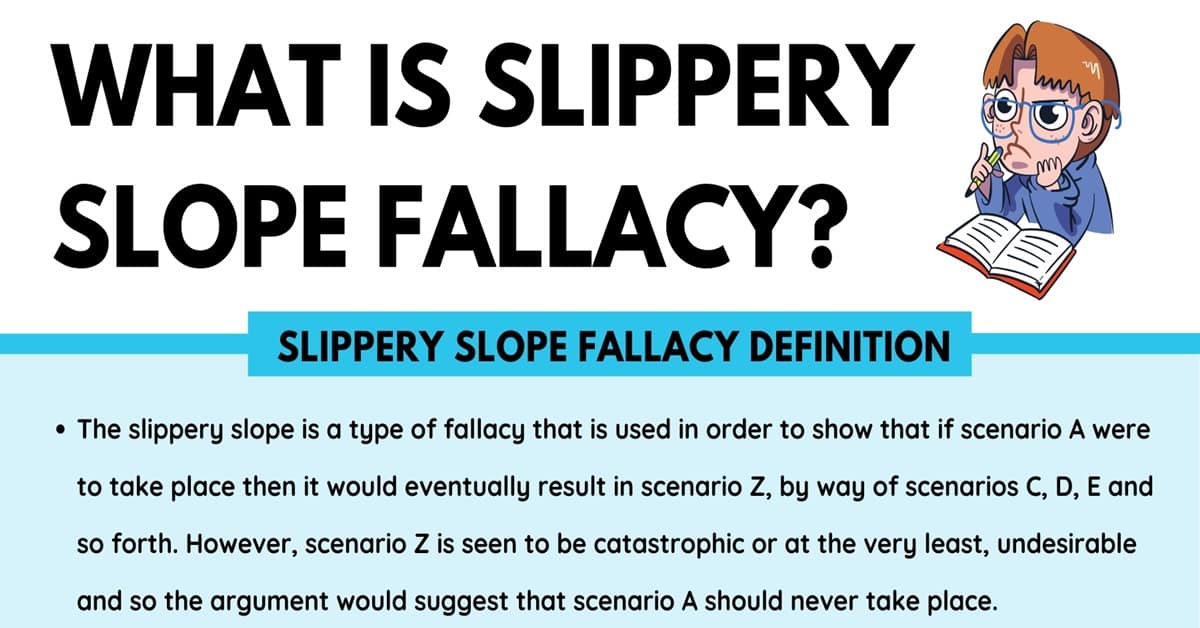What is the slippery slope fallacy? You are probably aware of a variety of different fallacies which are used in the English language, and one such fallacy is the slippery slope. In this article, we are going to be taking a much closer look at the slippery slope fallacy, finding out exactly what it is and how it is used. We will also be looking at a variety of examples in order to gain a deeper understanding of its function.
Slippery Slope Fallacy
Slippery Slope Definition
What Is The Slippery Slope Fallacy?
The slippery slope is a type of fallacy that is used in order to show that if scenario A were to take place then it would eventually result in scenario Z, by way of scenarios C, D, E and so forth. However, scenario Z is seen to be catastrophic or at the very least, undesirable and so the argument would suggest that scenario A should never take place.
In most cases, scenario A is not actually bad and is highly unlikely to result in the fruition of scenario Z. The slippery slope fallacy is one which is seen very frequently in various areas of the English language including day to day conversation, the media and in written work.
Slippery Slope Examples
Now that we have gained a better understanding of what the slippery slope fallacy is, we are going to take a look at some examples to show how it works.
- In many cases, we see the slippery slope fallacy used as a way to encourage children to complete their education. This is done by using phrases such as ‘if you do not do your schoolwork, you won’t be able to get a job.’ or ‘you’ll end up homeless if you do not finish your education.’ The scenario that is being claimed to occur is extreme and highly unlikely to happen just because some schoolwork is not completed, making this a slippery slope fallacy.
- When discussing the opening of safe injection sites for drug addicts, an argument was made which stated ‘if more people are using drugs then this will lead to a rise in violent crimes.’ There is no evidence to suggest that opening a safe injection site would lead to more violent crime.
- Look at this claim made by a teacher ‘if we allow this one child to hand in their homework late, then every child will always want to hand in their homework late.’ Again we see that the argument is not solid because the outcome is not likely to be what is being stated.
- When talking about gay marriage, remarks such as the following have been made ‘If we allow gay marriage then before you know it, people will be trying to marry their cat or their car.’ There is absolutely no evidence that allowing two human beings to marry will end up in anything near as farcical as what is being suggested in this claim.
Conclusion
The slippery slope fallacy allows the speaker to suggest that a disastrous scenario Z will be the obvious outcome if scenario A were to happen when in reality this is hardly likely.
Slippery Slope Fallacy Infographic










0 Comments